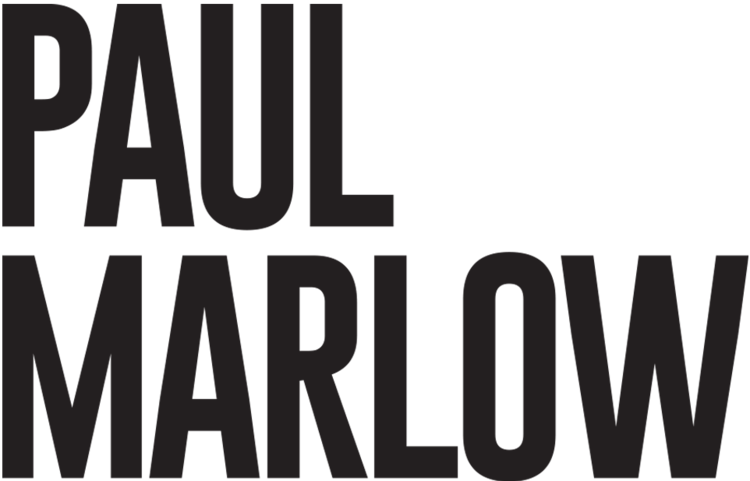Is it possible for a logo to become a work of art?
The genesis of this painting began all the way back in December, 2005. Erin Stokesberry, a long-time business accountant, asked Paul Marlow to design a logo for her new company, Cube Bookkeeping Service. Mr. Marlow said, “I created several different logo concepts, and Erin gravitated towards a 3-D look.”
The original Cube logo design concepts from 2005.
Fast-forward 15 years: Ms. Stokesberry’s partner, Gary Heaverlo, approached Marlow about creating a painting based on the Cube logo. The artist was immediately onboard. “I loved the idea of creating a work of art based on a logo I designed.”
“I knew I wanted to work big, so I primed a 36 in. x 36 in. canvas”, said Marlow. “I focused on the background first. The earliest underpainting had the look of a Mark Rothko color field canvas. I was encouraged by that look, but I wanted to create more depth and movement.”
Designed by Paul Marlow in 2005, the final Cube logo.
Last summer he started experimenting with an entirely new technique. Marlow was also influenced by the artist Brice Marden, who’s work Marlow discovered while in New York. A signature theme of Marden, among the world’s most celebrated artists, is a field of interlocking loops, loosely inspired by Chinese calligraphy.
Stylistically, Marlow began exploring the use of a meandering, calligraphic brush line in early 2019, when he used the technique to complete One Last Walk Together, an award-winning work. He employed the use of this technique for Exploded Cube, Summer Solstice. It is from there that he started to build the composition — slowly, layer upon layer — often painting over things that he didn’t like, but leaving vestiges of what is underneath visible.
“I built up several layers of those brushstrokes, in various warm tones, utilizing opaque and transparent washes of color to create depth”, said Marlow. It is that kind of depth and feeling of movement that he is trying to achieve in this new canvas. Marlow’s use of color and light is based on his direct experience of specific locations, as well as his memories and experiences.
The artist then combined metallic powdered pigments of gold and copper that he discovered from Schmincke, a German paint manufacturer. Combined with a clear medium, Marlow added the metallic gold and copper to the edges of the canvas. The effect was mesmerizing.
Adding metallic pigments to the work also solved a subjective issue Marlow had with his own signature on the painting. “I’m not a big fan of signing an abstract work of art, because I do not want my signature to distract from the visual”, said Marlow. “However, I signed this painting in gold, and it does not distract, because it can only be seen if the light is at just the right angle.”
“I do not want to limit myself to just one style. It’s like only speaking one language. Why not be bi-lingual? Or multi-lingual?”
While most artists generally don’t let outsiders see their works-in-progress, Mr. Marlow is surprisingly candid, sharing what it takes to create a painting and his constant struggle to achieve the desired effects. He even features a series of time-lapse photos on his website, called “Works-In-Progress” which reveal the progression of his creative work.
“Aesthetically, I am delighted with my first foray into geometric abstraction. I deliberately tried to create a work that succeeds on it’s own—whether the viewer knows it’s a logo or not,” he said.
Does this mean Marlow is giving up his representational style, in order to dive into the deep end of geometric abstraction, or abstract art in general? ”Hardly”, he said. “I still feel I have something to say with my figurative work, especially now during the pandemic. Fanfare for the Mailman is meaningful to me as I still have much to express in a representational style.”
“But I understand the allure of abstract art. It’s a direction I want to explore. I’m still discovering my vocabulary, because I want to say something meaningful. I do not want to limit myself to just one style. It’s like only speaking one language. Why not be bi-lingual? Or multi-lingual?”
Marlow is still experimenting. “Inspiration and energy can come from many different places. I’m deliberately trying to push my boundaries and go for something that is more natural,” he said. “I do not believe this style of painting is a kind of summation. I’d like to believe that it leads to something else.”



